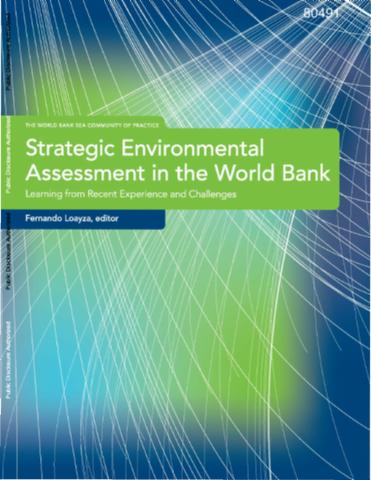Resource information
This report presents the results of a review of the World Bank's Strategic Environmental Assessment (SEA) experience undertaken by the World Bank learning community-the SEA Community of Practice (CoP). This report is no more than a first step. Its findings and results cannot be treated as conclusive. The World Bank follows the Organization for Economic Co-operation and Development (OECD) in describing SEA as 'analytical and participatory approaches to strategic decision-making that aim to integrate environmental considerations into policies, plans and programs, and evaluate the inter linkages with economic and social considerations'. Over time SEA has become more strategic by bringing different groups of stakeholders into an environmental and social dialogue in an iterative and adaptive way. Impact-centered approaches to SEA best fit to integrate environmental considerations in plans and programs where environmental impacts and risks can be identified and predicted. Country environmental analysis is a type of policy SEA developed to inform the dialogue between the Bank and client countries on national environmental priorities. The main objective is to strengthen Bank staff's capacity on SEA by fostering learning in applying SEA in World Bank-supported projects and thus contribute to sustainable development outcomes in programs, plans, and policies of client countries. To achieve this objective, among other activities of the SEA CoP, there is a component to take stock of the Bank's recent regional experience with the following scope of work. The structure of this report organized as: chapter two presents the synthesis and conclusions from the cross-analysis of the regional reviews. Chapters three through eight present the findings and conclusions of the regional reviews. Chapter three on the SEA experience in East Asia and the Pacific focuses on the use of SEA mainly as a tool for environmental safeguarding. Chapter four analyzes the use of SEA as a planning and policy tool drawing on the Middle East and North Africa experience. A mixed experience with impact-centered and policy SEA approaches is described by chapter five on South Asia. Chapter six on Sub-Saharan Africa shows a trend of using SEA initially for environmental safeguarding but later for informing policy making. Chapter seven shows that sector reforms and infrastructure developments have influenced the use of SEA in Latin America. And the mixed results of promoting SEA practice by making it regionally mandatory through the European Union's SEA directive are described in chapter eight on Europe and Central Asia.


